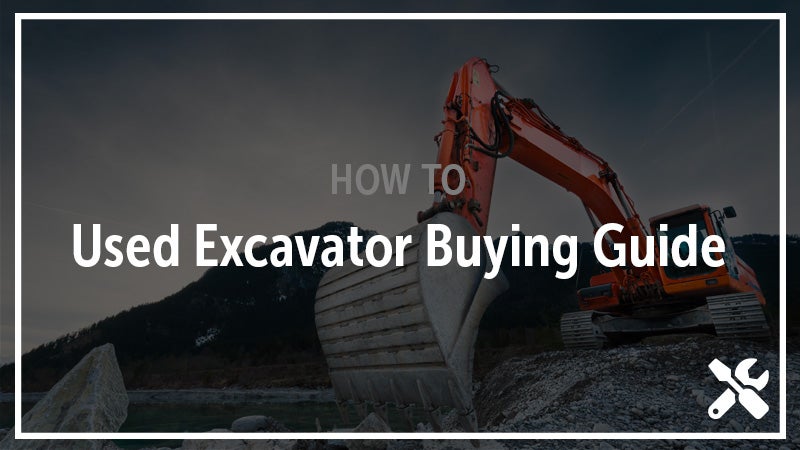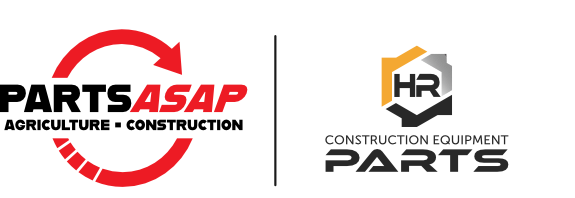
Used Excavator Buying Guide
If you’re searching for a used excavator, you might know exactly what you want, what to inspect, and how much to pay. However, if you’ve started your search and have some lingering questions about making sure the excavator you find is the one you need, we’ve put together this short used excavator buying guide to help.
Read on for some simple tips to help in your search and be sure the excavator you find is the best fit for you and your work.
Explore the Parts of an Excavator
What Size Excavator Should I Buy?
The first filter most people apply when searching for a used excavator is done by narrowing their search to the most appropriate size for their work. Often this can be a little easier said than done, since most owners will want to maximize the size and type of jobs they’ll be able to do with the excavator. An excavator that is too small can be strained to keep up with other equipment on the site while an excavator that is oversized can be difficult to operate in tight situations or simply be inefficient in many jobs.
Determining the perfect size excavator for your work will come down to evaluating the overall jobs you perform and matching your search to those jobs — but keep in mind that your investment in the machine is expected to come with a return on investment so be sure to weigh work that has the the ability to increase your ROI appropriately. If a bigger or smaller machine will bring in more money, it should help guide your search.

What to Inspect on a Used Excavator for Sales?
Closely Inspect the Hydraulic System and Fluids
Even more than many other construction equipment machines, an excavator relies on a well-operating and well-maintained hydraulic system so extra care should be taken to thoroughly inspect the hydraulic system. In your inspection, you’ll want to take a close look at the main hydraulic pump, all cylinders, and each of the final drives to look for leaks. While a simple leak might only mean a few minutes of maintenance it can also be a sign of neglect or issues in the system.
You’ll also want to examine the overall hydraulic fluid (or even have it tested) to determine if there’s issues in the hydraulic system. Even simply rubbing the fluid between your fingers to see if grit or debris is in the fluid can help you diagnose troubles in the system or a lack of proper maintenance. And since a tracked excavator is powered by its final drives, it's important to also check the fluid in the final drives to see if indications of wear in the planetary gears or other components is starting to show.
Examine the Slewing Ring for Play or Improper Movement
At the connection point between the excavator house and the car body is a slewing ring that facilitates the smooth and independent spinning of the house. This critical part is put to work every time the house spins and eventually it will wear out and need replacing, which can be a larger repair. Knowing how the slewing ring is operating when you buy the machine can help you better determine the price you should pay.
To test the slewing ring you should slowly rotate the house and watch for play, wobbling, or any other non-standard movement. You should also ensure the movement is smooth and uniform and, if possible, examine the grease inside the ring for debris or grit since that could indicate parts are wearing out through friction inside this bearing.
Inspect Cylinders, Pins, and Bearings
Anywhere two parts come together to form a hinge or pivot point will always be a spot for increased friction, wear in connections, and troubles with parts. An excavator gets its unique benefits from the wide range of motions it can perform, but at each point a number of parts have to work together smoothly to allow this movement. When you inspect the machine, you should examine these points (and even run them through their movements) for signs of failure, binding, misalignment, or jagged movement.
Since the movement of the bucket, stick, boom, and other parts is made possible by the hydraulic cylinders on the excavator, you should also check the cylinders for leaks, examine the chrome for pitting or rust, and see if bends or misalignment are visible. Swapping out a cylinder isn’t the biggest job on the machine, but if it's needed it's better to know ahead of time.

Check the Bucket, Bucket Teeth, and Cutting Edges
While rust on a used excavator bucket can often be expected, you should ensure that heavy wear to teeth and cutting edges won’t impact the efficiency of the excavator. You should also watch for patches or welds that indicate the bucket has been repaired. While repairs to the bucket aren’t necessarily a dealbreaker, ensuring they were done correctly and professionally can help you determine the remaining working life of the bucket.
Read Full Excavator Bucket Buying Guide
Examine the Undercarriage
The undercarriage on an excavator is commonly the priciest point for repairs, regardless of the condition of the machine. But by paying extra attention to the undercarriage you can often develop a better idea of the depth and costs of coming maintenance to the excavator. Besides checking the overall condition of the tracks, you’ll want to ensure tension is being properly applied through tensioners and track springs and that idler wheels and rollers wheels aren’t overworn or out of alignment.
Check the Final Drives
The tracks on an excavator are powered by two final drives and though these drives are designed to stand up to long-term and hard-pressing work, inside of each drive are gears that can deteriorate over time. While you likely won’t be popping them open to see the condition of the gears, you can still inspect the fluid for signs of contamination and put them to work to ensure they help the machine travel smoothly with no jerks or delays in the machine’s movement.

Inspect the Cab
The cab on a used excavator can often be an afterthought in a search, but a cab with failing safety equipment, worn out controls, or other issues can lead to issues with operator safety and comfort. Adding an excavator to the team should be met with an enthusiasm by operators, and troubles in the cab can sour their experience running the machine. Taking time to identify issues with a cab and plan for repairs ahead of time can ease your new machine into your line-up and ensure it's put to work the day it lands on a jobsite.
Determine the Popularity of the Machine and the Availability of Replacement Parts
Hopefully the machine you find will run its best for the longest, but every part wears out eventually and when it does, you’ll need a replacement. In your search, identifying the parts that would commonly need replacements or rebuilding and determining if they’ll be available can help ward off supply struggles in the future.
As the machine ages, the ability to find replacement parts will always go up, but ensuring the machine comes from a popular excavator manufacturer can help you avoid long searches and/or high costs.

How Much Should I Pay for a Used Excavator?
Once you find the perfect excavator for sale, you’ll be on to finding a price that works for both you and the seller. Some research will often turn up comparative costs for similar machines and provide you with a starting point for your negotiations. However, if you’re reading this in 2022, you’ve probably already discovered that supply chain issues and other factors have led to some scarcity in the market and an increased demand for used construction equipment.
To properly evaluate your specific machine, starting a checklist and marking the condition of the parts listed above and other important parts and then matching that to the costs for repairs can help you and the seller come to an agreement about the best price for the machine.
How to Evaluate a Used Excavator for Sale Online
If your search turned up a used excavator just down the road or even a little trip away, taking the time to see the machine in person will let you get a close look at important parts. But if the machine is too far away to see in person, you should request plenty of pictures of the machine, including close-ups of critical parts, and even video of the machine running and moving to see and hear it in action. In today’s digital world, a reputable seller will have no issues providing this digital proof of the condition of parts and be happy to ensure you both agree on the condition of the machine.
Hopefully with these simple inspection tips, you’ll be a few steps closer to finding the perfect used excavator and it’ll work worry-free for the long term. If you do find yourself in the search for a replacement — either to bring your newly purchased excavator up to your working standards or to handle a repair down the line — we’re always here to help. As a top dismantler and rebuilder of excavator parts, our Parts Specialists are your resource for finding a replacement part and getting back to work quickly.
When you call an H&R Parts Specialist, they’ll connect you to our deep inventory of new, used, and rebuilt excavator parts, as well as our vast interconnected parts network. Just drop them a line.



